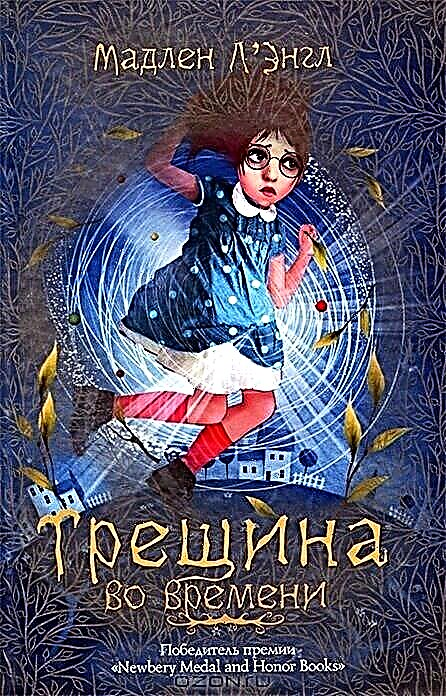Writing a book is very hard work, and many novice writers are almost ready to give up their work after one or two publishers fail. We want to tell them: “Don't give up!” You will be shocked to find out how many world famous books (and writers) have gone through failures on the way to literary fame.
Even the best-selling authors of all time, such as J.K. Rowling and Stephen King, who can now bathe in money, like Scrooge McDuck in gold, have received numerous no from book publishers.
We present to you the top 10 famous books that were initially rejected by publishers.
10. The Dune, Frank Herbert
 Publishers refused 23 times to the author of the world famous book.
Publishers refused 23 times to the author of the world famous book.
Dune, first published as a separate book in 1965, is today considered one of the most popular science fiction works. George Lucas admitted that Dune was one of the sources of inspiration for the creation of Star Wars.
But on the road to fame, Herbert's novel was repeatedly rejected by publishers. Since 1963, he was published in parts in the journal Analog Science Fiction, and even won the prestigious Hugo Prize, but the publishers were in no hurry to release Dune in the form of a book. They did not like that Herbert’s work had too much volume and an old-fashioned style of presentation, and the heroes seemed too implausible. Only a small publisher of Chilton Books decided to publish Dune as a whole piece.
There are currently six published novels in the Dune universe. And in 2020 (or in 2021, if the premiere date is postponed due to the coronavirus), the film “Dune” directed by Denis Villeneuve should be released. It will replace the not-so-good 1984 version of the film by director David Lynch.
9. Lolita, Vladimir Nabokov
 Failures: 5
Failures: 5
Nabokov’s masterpiece hardly found a publisher, because many considered this book too obscene for public consumption.
One editor wrote: “It's sickening, even for an enlightened Freudian. It will be disgusting to the public. It will not be sold and will cause immeasurable damage to the growing reputation ... I recommend burying it under a stone for a thousand years. ”
8. Gone With the Wind, Margaret Mitchell
 Rejected the offer to publish the book: 38 times.
Rejected the offer to publish the book: 38 times.
This novel was written by the American writer Margaret Mitchell, who worked as a reporter for the Atlanta Journal, but was forced to leave work in 1926 due to physical trauma. Her husband gave her a typewriter so that Margaret dispelled her boredom. Who knew that this simple step would be the first on the path to world fame?
Despite dozens of publishers failures, the epic about the US Civil War, which took away Scarlett O`Hara’s youth and carelessness, was able to win the Pulitzer Prize in 1937, and became the basis for creating one of the best films of all time.
7. The Lord of the Flies, William Golding
 21 publishers did not take this book.
21 publishers did not take this book.
One of the letters of rejection sent to Gold read: "An absurd and uninteresting fantasy, which is boring nonsense." But this is said about a work that critics subsequently called one of the most important books of the 20th century.
In the end, Faber & Faber agreed to release the book, but with one condition. The author was supposed to seize the first few pages that described the horrors of nuclear war. Only the nightmares of human nature remain.
In 1983, William Golding received the Nobel Prize for Literature for The Lord of the Flies. And in 2005, the novel was included in the top 100 best works in English since 1923 according to Time magazine.
6. "Frankenstein or modern Prometheus" by Mary Shelley
 The exact number of publisher failures is unknown.
The exact number of publisher failures is unknown.
Surprisingly, the author of the book about the chemical scientist Victor Frankenstein and the creature he created from the dead flesh was an 18-year-old girl. Moreover, the work was written in an argument: one rainy evening, Shelley, her husband Percy and their friend Lord Byron gathered at the fireplace and argued who would write the best work about the supernatural. From that day, Mary began her work on Frankenstein, which became the first Gothic novel in the world.
The circulation of the first copy of Frankenstein, published in 1818 by the small publishing house Lackington, Hughes, Harding, Mayor & Jones, was limited to 500 copies, and Shelley's name was not even on the cover. She had to wait 13 years, until 1831, to see the commercial success of her book.
Today, Frankenstein's Monster is one of the most iconic figures in horror history, possibly second only to Dracula.
5. Carrie, Stephen King
 Proposal to publish a book rejected: 30 times.
Proposal to publish a book rejected: 30 times.
Stephen King's first published novel, “Carrie,” appeared on the shelves of bookstores on April 5, 1974, but his path to publishing was not as easy as you might have imagined.
At first, “Carrie” was supposed to be a short story, but after writing only three pages, King threw it in the bin. Fortunately, his wife took out a draft and advised her husband to turn Carrie into a novel. But that was not the end of King’s suffering. Ahead were the failures of book publishers.
One rejection letter said: “We are not interested in science fiction, which deals with negative utopias. They are not for sale. ”
When Doubleday Publishing agreed to publish the hardcover book, King was overjoyed and used his $ 2,500 advance payment to buy a new car.
4. The Farmyard, George Orwell
 Failures: 20
Failures: 20
Several publishers have abandoned this world-famous book for fear of upsetting relations between Britain, the United States and the Soviet Union.
And even when the novel was published, Orwell was criticized. George Soul wrote in New Republic magazine that Animal Farm “puzzled and saddened me. It turned out to be generally boring. The allegory turned out to be a creaky machine for a clumsy statement about what could be better said directly. ”
3. “The Crack in Time,” Madeleine L’Angle

Disagree to publish the book: 26 publishers.
Having crossed the 40-year milestone without much literary success, Madeleine L’Engle almost gave up writing. But after a 10-week camping trip, she found inspiration to create a “Crack in Time”. She has become one of the best books in the genre of children's fiction.
2. “The Anne Frank Diary”, Anna Frank
 Rejected: 15 times.
Rejected: 15 times.
Jewish girl Anna Frank and her family were sent to a concentration camp after they were arrested by the Gestapo in 1944. Anna's father, Otto Frank, was the only surviving member of the family. When he was given the diary of his daughter, he decided to publish it.
This true story reveals the threats faced by Jews during Nazi Germany. Although Anna was killed at the age of 15, this book remains an upbeat story, despite the terrible trials the girl went through.
One of the publishers, who refused to publish the diary, spoke of him like this: “The girl, it seems to me, does not have a special perception or feeling that would raise this book above the level of“ curious ”.”
1. "Harry Potter and the Sorcerer's Stone", Joan Rowling
 Before the book was a success, 8 publishers rejected it.
Before the book was a success, 8 publishers rejected it.
Joan Rowling's debut novel has sold over 107 million copies, but this success would not have been possible if it hadn't been for Alice Newton, the eight-year-old daughter of Bloomsbury founder Nigel Newton. She found the first chapter of the novel and asked her father to read the rest of the book, which Bloomsbury subsequently agreed to publish.
Interesting fact: the publisher was worried that Rowling’s book was “a book for boys,” and Rowling’s initials were on the covers of the first Harry Potter adventures so that the male audience wouldn’t be biased about stories written by a woman.
Rowling was also advised to get a full-time job, rather than relying on writing as a career, and given just £ 2,500 in advance. We all know what happened then: books, and then a series of films about the Boy-who-survived, brought Joan Rowling world fame. As for the “book for the boy”, it is universally loved by people of all ages, genders, social classes and cultures.












